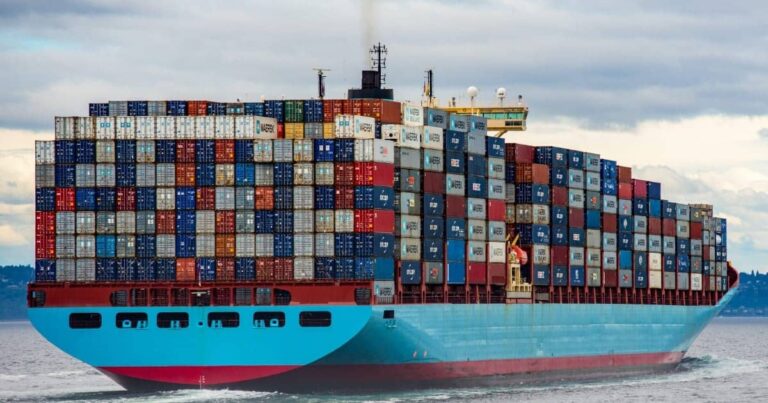20 Amazon Statistics Sellers Need to Know in 2023
Amazon is currently one of the largest online retailers in the world. If you are planning to start your cross-border e-commerce business by joining the Amazon seller platform, or if you are already an Amazon seller, understanding some data reports about Amazon can help you better manage your Amazon store.
In this article, we have carefully compiled 20 intriguing Amazon statistics reports about Amazon. By using these data, sellers can gain a better understanding of the Amazon platform. We hope that the Amazon statistics we have gathered will be helpful to you!
Astonishing Amazon Statistics
- Amazon has 310 million active users.
- More than 197 million people use Amazon’s applications every month.
- Amazon has surpassed 6 million global buyers, of which 2.5 million are active sellers.
- In 2020, Amazon had an annual revenue of $386 billion.
- In the United States alone, more than 4,000 items are purchased on Amazon per minute.
- 90% of users check product prices on Amazon.
- Amazon sells over 12 million products on its website.
- Amazon generated $470 billion in revenue in 2021, making it the world’s third-largest revenue company.
- Amazon Web Services accounts for 13% of that revenue.
- In 2021, Amazon earned a net income of $33.3 billion, with about half of that coming from AWS.
- Over 200 million users worldwide subscribe to Amazon Prime, with 147 million in the United States alone.
- In 2021, Amazon Prime Video had 175 million users, while Prime Music reached 68 million in 2021.
- In 2022, Amazon ranked second on Fortune Magazine’s Global 500 list.
Amazon.com Company Overview
| Company Name | Amazon.com, Inc. |
| Founded | July 5th, 1994 |
| Headquarters | Seattle, Washington, USA |
| Company Management | Jeff Bezos(Executive Director)、Andy Jassy(President and CEO)、Brian Olsavsky(CFO) |
| Stock Code | (NASDAQ: AMZN) |
| Company Industry | E-commerce |
Amazon.com’s Latest Data Report
1. Amazon holds a market share of 56.7% in the US e-commerce market.
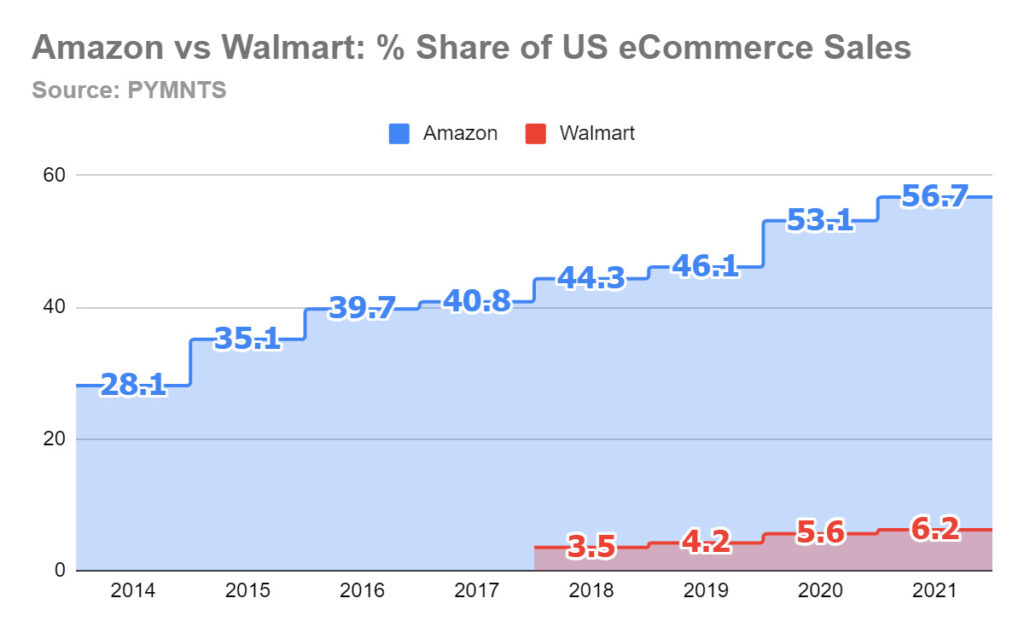
The Amazon platform is as well-known in the US as Alibaba’s Tmall and Taobao are in China. According to a report and data from the globally renowned financial information website PYMNTS, nearly 60% of online retail purchases in the US are made on the Amazon platform, doubling its market share in the US online retail industry from 28.1% in 2014 to 56.7% in 2021.
PYMNTS survey results show that Amazon has been in a leading position in online network sales, surpassing Walmart. In 2021, the Amazon platform increased its online retail sales share by 3.6 percentage points, achieving a growth of 10 percentage points since the COVID-19 pandemic in 2019.
Despite Walmart’s more than 5000 physical stores in the US and its increasing investment to boost its e-commerce sales, the Amazon platform still leads its competitors by more than 10 times.
2. Amazon sellers exceed 6 million
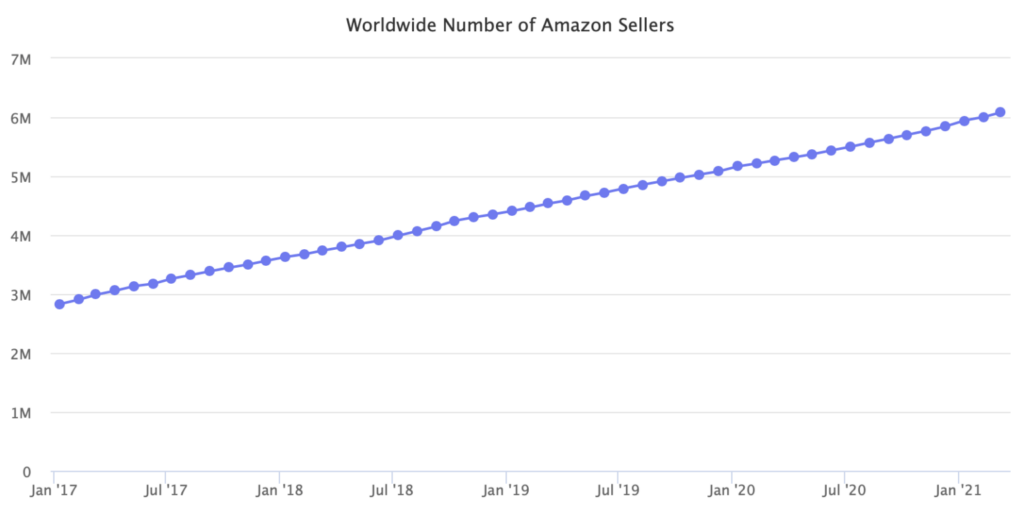
As one of the world’s largest online e-commerce platforms, Amazon currently operates 20 sites globally, serving consumers in over 180 countries and regions. With over 310 million active customer accounts and more than 1.9 million selling partners, Amazon has a dominant presence in the global online retail space.
| Market | Number of Sellers | Market Shares | Annual Growth |
| North America | 3119000 | 51% | 281000 (10%) |
| Europe | 1443000 | 25% | 207000 (17%) |
| India | 750000 | 11% | 168000 (29%) |
| Japan | 573000 | 11% | 81000 (16%) |
| Middle East | 72000 | 1% | 40000 (125%) |
| Australia | 56000 | 1% | 13000 (31%) |
| Brazil | 48000 | 1% | 18000 (61%) |
| Turkey | 17000 | 0% | 6000 (58%) |
| Singapore | 16000 | 0% | 11000 (22%) |
| 6090000 | 829000 (16%) |
The vast marketplace of Amazon naturally attracts countless sellers from around the world. According to data from the well-known e-commerce research website Marketplace Pulse, the number of Amazon seller accounts exceeded 6 million at the beginning of 2021. However, Marketplace Pulse’s research found that Amazon’s 19 sites have more than 10 million accounts, and many businesses sell in multiple Amazon markets, so the number of sellers in a single market is significantly lower than the number of seller accounts.
In addition, the huge market prospects of Amazon’s platform have attracted hundreds of thousands of Chinese sellers, which is also one of the reasons why Amazon seller forums and cross-border e-commerce forums are gradually increasing in mainland China.
3. 75% of new Amazon sellers come from mainland China
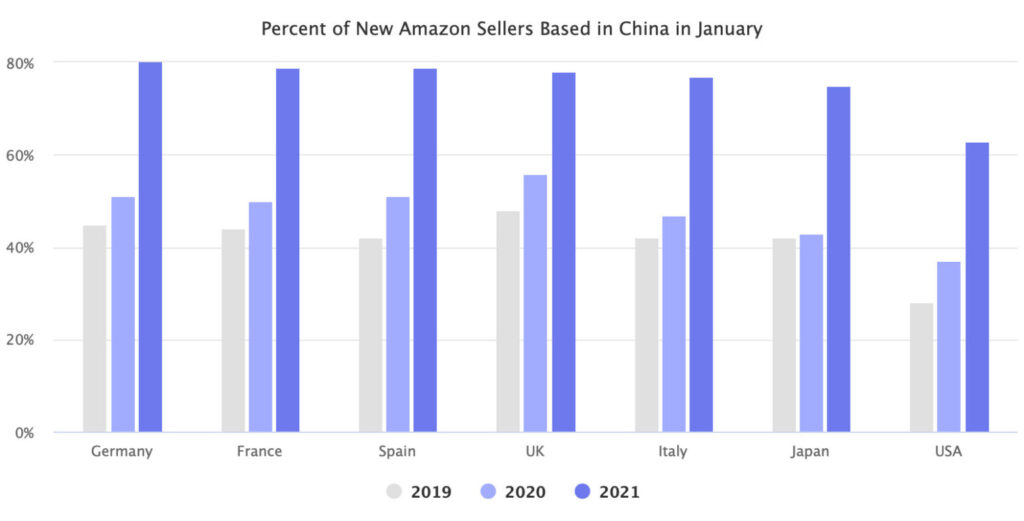
We have already discussed that the number of Amazon sellers surpassed 6 million as early as 2021 and is growing at a rate of over 2,000 new sellers per day, with Amazon US alone adding 700 new sellers daily. Nearly 75% of new sellers in Amazon’s four core markets (the US, UK, Germany, and Japan) come from China.
In January 2019, Chinese Amazon sellers accounted for 41% of new sellers. By January 2020, this figure had risen to 47%. In the US Amazon market, the number of Chinese sellers increased from 28% in 2019 to 63% in 2021. Since March 2020, more than half of the new sellers in the US Amazon market have come from mainland China.
4. Chinese sellers are gradually reclaiming lost ground after the “account suspension wave”
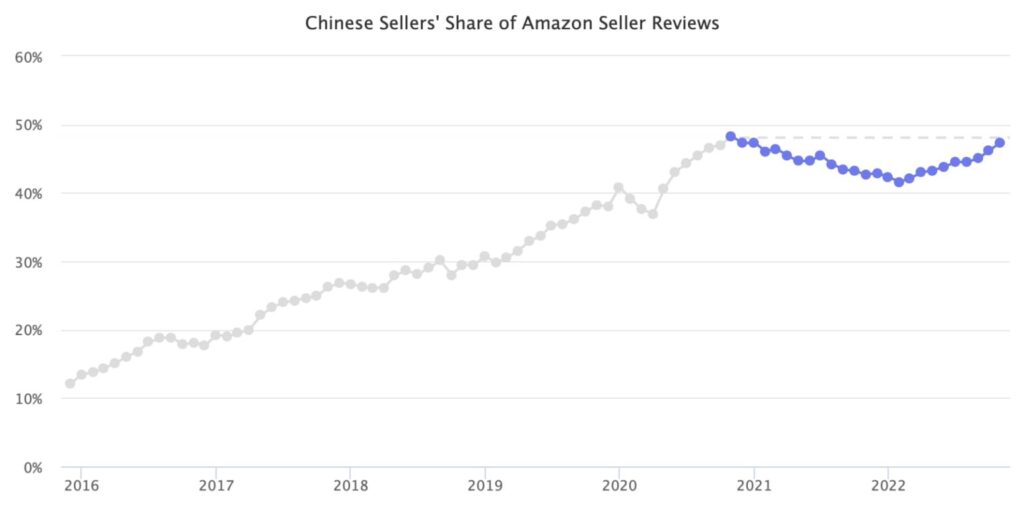
Since May 2021, Chinese Amazon sellers have experienced the worst “account suspension wave” ever. For Chinese cross-border e-commerce sellers, Amazon has multiple global markets, each with its own rules and regulations. If sellers fail to comply with the corresponding rules, they are likely to face the problem of being banned by Amazon. In the “account suspension wave” of 2021, over 3,000 Chinese seller accounts were suspended overnight, which was related to their severe violation of rules such as review manipulation and fake orders.
The “Amazon account suspension wave” undoubtedly discouraged new sellers who wanted to join the Amazon seller platform, and even made many Amazon sellers start building their own independent cross-border e-commerce websites to get rid of the constraints of the Amazon platform. However, according to statistics from Marketplace Pulse, during the “Amazon account suspension wave,” the number of Chinese Amazon sellers decreased slightly, but over time, Chinese Amazon sellers are gradually regaining lost ground.
5. Amazon.com user access devices data
As one of the largest e-commerce websites in the world, Amazon is currently the most visited e-commerce shopping website globally, according to the latest statistics from Similarweb. Amazon.com, the US site, receives over 2 billion visits per month from desktop and mobile users.
According to official statistics from Amazon, over 42 million US unique visitors access the website from desktops each month, while over 126 million US unique visitors access the website from mobile devices. It is clear that the number of mobile users on Amazon.com is three times higher than that of desktop users, which is one of the reasons why many cross-border e-commerce or independent websites place such importance on mobile devices.
6. 85% of buyers check product reviews before purchasing
Consumers today increasingly rely on product reviews to make their purchasing decisions, which is why unboxing experience articles, videos, and live streams are so popular. With the rise of online shopping platforms, most consumers’ purchasing decisions are influenced by user reviews, product images, and descriptions from different platforms. According to ecommerce statistics, 85% of buyers will read reviews before purchasing a product, and they will also compare prices across multiple platforms.
Consumer reviews subtly influence consumers’ purchasing decisions, which is why Chinese Amazon sellers previously went to great lengths to obtain positive reviews and even risked creating fake reviews. However, both cross-border e-commerce platforms and domestic platforms in China have strict e-commerce rules, and fake reviews are strictly prohibited, which is one of the reasons for the “Amazon ban wave”.
7. 80% of Amazon buyers prefer free shipping and fast delivery
After placing an order, buyers are generally eager to receive their purchased items as soon as possible. According to Statista, 80% of Amazon sellers expect to buy products that offer free shipping and faster delivery speeds. Additionally, Sleeknote reports that over 24% of buyers are willing to pay more to receive free shipping.
This data reveals why so many Amazon sellers offer free shipping or free shipping for orders over a certain amount. Currently, this sales strategy is not limited to Amazon platform alone, and other independent websites are also adopting various free shipping-related sales strategies.
8. 69% of buyers will abandon their shopping cart
Online shopping and offline shopping actually have many similarities. Many buyers are more interested in browsing products, and even if they have added items to their cart, it doesn’t mean they will immediately place an order and make a payment. According to relevant e-commerce data, shipping fees, taxes, and additional charges are the primary reasons why consumers abandon their shopping carts, followed by complex checkout processes.
Therefore, to increase sales, you can optimize your Amazon seller store based on this data. Offer free shipping or free shipping over a certain amount to address the issue of shipping costs, simplify the checkout process to address the issue of complexity, and send email or mobile text reminders to consumers who have abandoned their shopping carts. These are all highly effective and practical measures for increasing sales.
9. 89% of U.S. consumers prefer to shop from Amazon
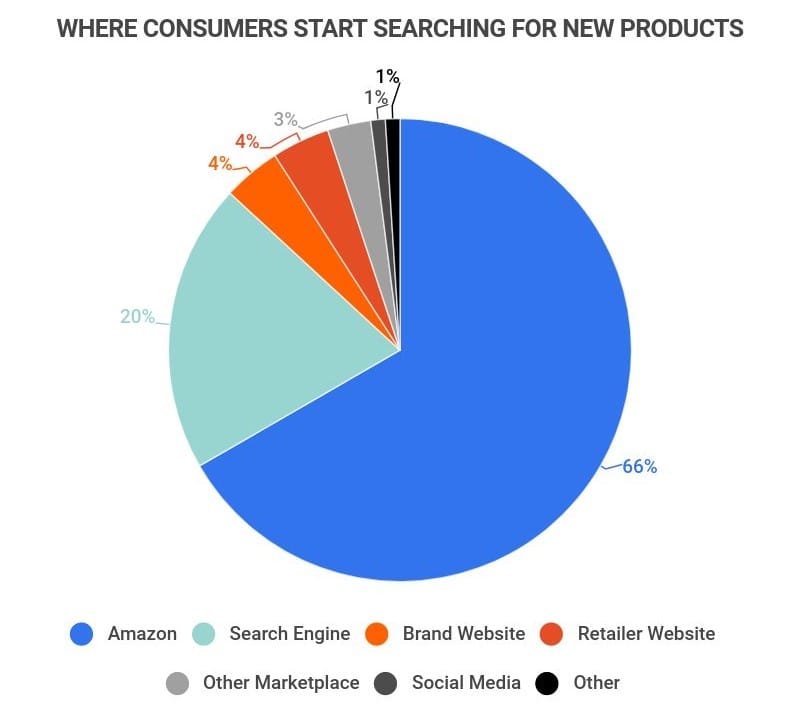
As mentioned earlier, Amazon has over 50% of the market share in the United States, so when it comes to online shopping, most Americans think of Amazon. According to statistics from Zippia, currently, 89% of American consumers prefer to shop on the Amazon platform, which is one of the reasons why there are so many Chinese e-commerce sellers on the American Amazon market.
In addition, as a well-known e-commerce shopping platform in the United States, nearly 66% of consumers are more inclined to search for new products through the Amazon shopping platform.
10. Amazon has 20 sites worldwide
- United States – http://amazon.com/
- Canada – http://amazon.ca/
- China – https://www.amazon.cn/
- Mexico – http://amazon.com.mx/
- United Kingdom – http://amazon.co.uk/
- Germany – http://amazon.de/
- France – http://amazon.fr/
- Italy – http://amazon.it/
- Spain – http://amazon.es/
- Japan – http://amazon.co.jp/
- Singapore – https://www.amazon.sg/
- United Arab Emirates – http://amazon.ae/
- Brazil – http://amazon.com.br/
- Australia – https://www.amazon.com.au/
- India – http://amazon.in/
- Netherlands – https://www.amazon.nl/
- Saudi Arabia – http://www.amazon.sa/
- Turkey – https://www.amazon.com.tr/
- Sweden – https://www.amazon.se/
- Poland – https://www.amazon.pl/
- Belgium – https://www.amazon.com.be/
Among the current 20 Amazon sites, the four major core sites of Amazon are the United States, United Kingdom, Germany, and Japan. Amazon Belgium is a new independent site launched in 2022. According to Marketplace Pulse’s speculation, Amazon is likely to launch its next independent site in Ireland, Austria, or Norway to expand its European market. Let’s wait and see.
11. 185 FBA centers worldwide

FBA stands for Fulfillment by Amazon, which refers to Amazon’s logistics service. It allows sellers to send their products in bulk to Amazon’s fulfillment centers, where Amazon stores, sorts, packages, and ships orders to customers. FBA also includes customer service for inquiries and returns, which helps sellers save on manpower, resources, and costs.
For Chinese Amazon sellers, they need to ship their products from mainland China to overseas Amazon warehouses, and Amazon takes care of the rest of the shipping and related after-sales services. This can be a significant help for sellers.
Currently, Amazon has 185 FBA centers worldwide, with 110 centers located in the United States. According to data, out of over 6 million Amazon sellers worldwide, more than 73% choose to use FBA.
12. Amazon’s annual net sales surpass $469.8 billion
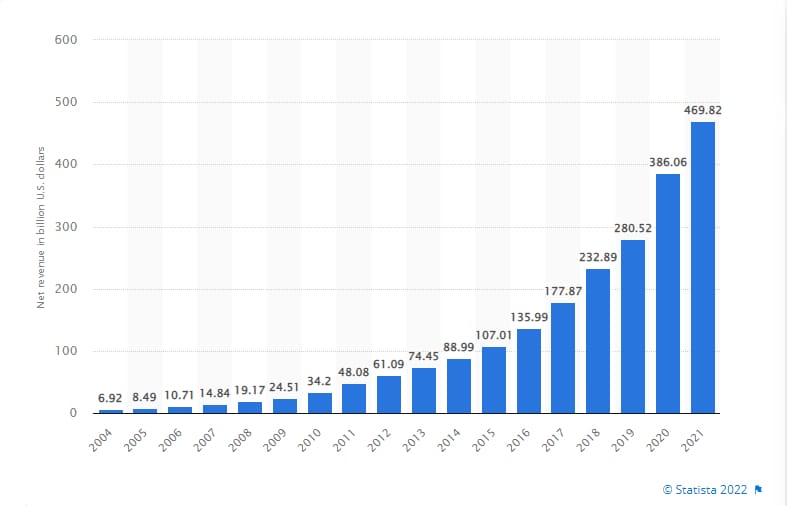
According to Statista’s data, Amazon’s net sales in 2021 reached $469.82 billion, an increase of 21.7% compared to the previous year. With a platform that has over 300 million global users and more than 6 million sellers, Amazon is a major player in the e-commerce industry. Its annual sales data reflects its dominance in the market and its ability to meet the demands of consumers worldwide.
13. Amazon platform posts first loss in 7 years
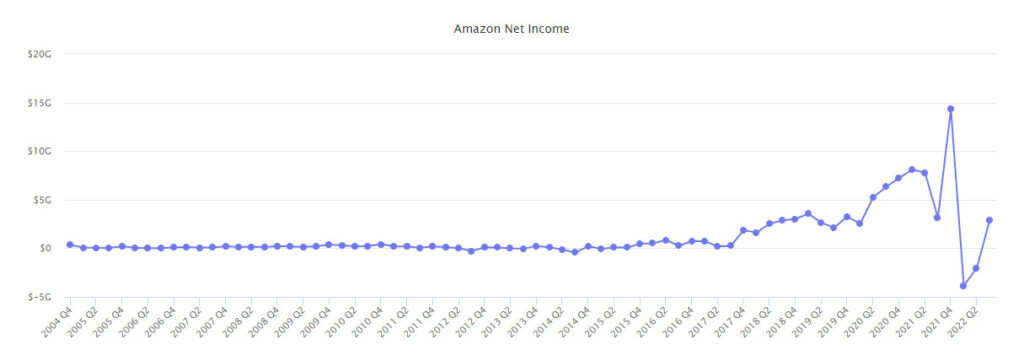
Amazon, as one of the world’s largest online internet retailers, has maintained steady growth since it turned a profit in the first quarter of 2015. Its net income reached $14.323 billion in the fourth quarter of 2021, an increase of 28 times compared to $482 million in the fourth quarter of 2015. However, in the first quarter of 2022, Amazon incurred a net loss of $3.844 billion due to its investment in electric vehicle company Rivian. This was the first time Amazon had reported a loss in seven years. Nonetheless, according to the latest statistics from Marketplace Pulse, Amazon returned to profitability in the third quarter of 2022 with a net income of $2.872 billion, down 9% compared to the same period last year when it was $3.156 billion.
14. 62% of Amazon sellers earn less than $5000 per month
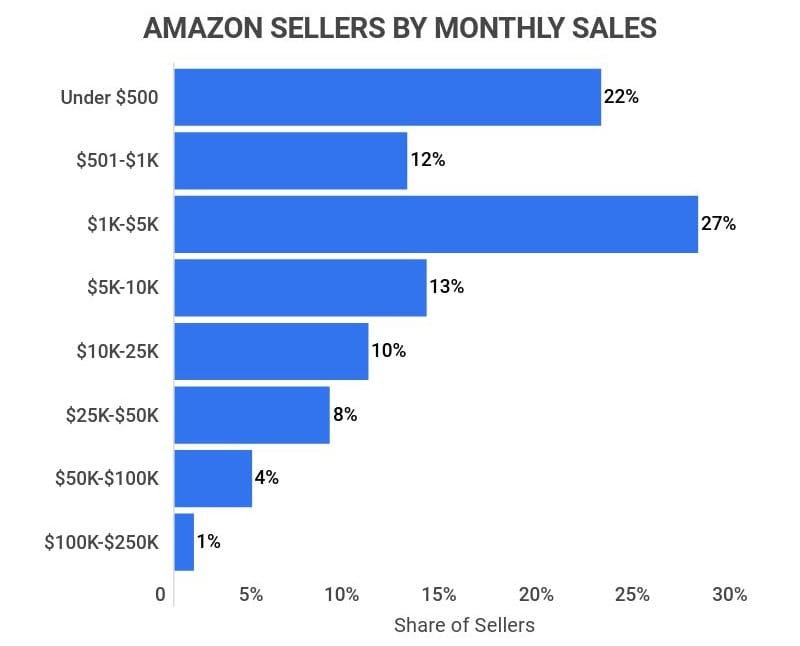
As mentioned earlier, the number of active sellers on the Amazon platform exceeded 6 million in 2021, and the platform’s net sales exceeded $469.8 billion in the same year. However, what about the income of Amazon platform sellers? According to the latest statistics from Zippia, currently, 62% of sellers have a monthly income below $5,000, while only 5% of sellers have a monthly income exceeding $50,000.
15. 50,000 Amazon China seller stores affected by “account suspension wave”
Chinese sellers can be found on various Amazon marketplaces around the world. However, due to a lack of understanding of the rules of overseas e-commerce platforms, some Chinese sellers apply the same tactics used on Chinese e-commerce platforms to Amazon without carefully reviewing the platform’s rules. This can easily lead to violations and result in their stores being shut down. In the “Amazon account suspension wave” of 2021, over 3,000 Amazon stores were shut down overnight.
According to statistics from the Shenzhen Cross-border E-commerce Association, nearly 50,000 Amazon stores were shut down during the “Amazon account suspension wave”, resulting in a loss of up to $100 billion. This has sounded the alarm for Chinese cross-border e-commerce sellers on the Amazon platform. Some of them plan to establish independent cross-border e-commerce sites to break free from the constraints of the Amazon platform.
16. Chinese sellers account for 59.3% of the top Amazon sellers worldwide
| Country | Number of sellers | Proportion |
| China Mainland | 208 | 59.3% |
| USA | 122 | 34.8% |
| Hongkong | 14 | 4.0% |
| UK | 2 | 0.6% |
| Australia | 1 | 0.3% |
| Mexico | 1 | 0.3% |
| Puerto Rico | 1 | 0.3% |
| Ukraine | 1 | 0.3% |
| Vietnam | 1 | 0.3% |
As we mentioned earlier, the number of sellers on Amazon platform has exceeded 6 million, and most of these sellers come from China. At the same time, Chinese Amazon sellers also account for a large proportion of the daily new sellers on Amazon. According to the latest statistics from Ecomcrew, Chinese sellers account for 59.3% of the top Amazon sellers worldwide.
According to Chinese e-commerce news reports, 70% of sellers in China’s cross-border ecommerce industry come from Guangdong, China, and 50% of that share comes from Shenzhen.
17. Amazon has more than 1.6 million full-time employees worldwide
Although Amazon is an online ecommerce shopping platform, its services have expanded beyond online shopping. Many Amazon sellers use the FBA (Fulfillment by Amazon) method to sell their products on the Amazon platform. Currently, Amazon has 185 FBA centers worldwide, including 110 in the United States alone. As a result, Amazon needs to recruit more full-time employees.
According to the latest statistics from Macrotrends, Amazon’s full-time workforce reached 1.608 million in 2021, an increase of 23.88% compared to 1.298 million in 2020.
18. Amazon has 200 million paid subscription members
Amazon Prime is a subscription-based service launched by Amazon in February 2005. The main difference between Amazon Prime and regular Amazon users is that Prime members can enjoy more Amazon membership benefits. Currently, Amazon membership benefits include unlimited free shipping for Amazon overseas purchases, annual Prime Day, massive member-exclusive discounts, Prime Wednesday, and more.
According to the latest data, the number of paying subscription members on the Amazon platform has exceeded 200 million, with more than 157.4 million Amazon Prime members in the United States alone. Currently, Amazon membership services have been launched in 22 countries and regions worldwide, including Italy, Japan, the United States, India, France, Germany, Canada, China, Luxembourg, Mexico, the United Kingdom, Saudi Arabia, Singapore, Austria, Australia, the Netherlands, Poland, Belgium, Brazil, Spain, Turkey, and Sweden. Amazon’s revenue from paid subscription members is nearly $25 billion annually.
19. Amazon founder Jeff Bezos becomes a global billionaire

Amazon was founded in July 1994, and after nearly 30 years of development, it has become one of the world’s largest e-commerce shopping websites, with net sales on the Amazon platform surpassing $468.9 billion in 2021. The rapid growth of the Amazon platform also made its founder Jeff Bezos a billionaire.
In 2020, on Forbes’ list of global billionaires, Jeff Bezos, the founder of Amazon, ranked first with $113 billion. According to the latest data from the 2022 Forbes Global Billionaires list, Jeff Bezos ranked fourth with $115.7 billion, while the top three were Bernard Arnault & family (ranked first with $188.6 billion), Elon Musk (ranked second with $176.8 billion), and Gautam Adani (ranked third with $135 billion).
20. Amazon’s top five products account for over 90% of market share.
Currently, Amazon has over 300 million active users worldwide. In order to meet the consumption needs of different buyers, the Amazon platform has 33 major product categories and over 25,000 product subcategories. Amazon has a significant market share in the global internet e-commerce market, with a market share of over 90% in five product categories: batteries (97%), kitchen and dining (94%), home decor (93%), golf (92%), and skin care (91%).
However, if you want to learn about Amazon’s best-selling products, you can also check out the Best Seller page provided on the Amazon official website. This page displays best-selling products based on their sales volume and you can switch between different product categories using the menu on the left sidebar. Additionally, the data on this page is updated every hour!
FAQ for Amazon
Amazon Headquarters: Where is it located?
Amazon’s global headquarters is located in Seattle, Washington, USA, while its European headquarters is in the capital city of Luxembourg, Luxembourg City. Additionally, as an international e-commerce company, Amazon has established multiple offices, fulfillment centers, warehouses, customer service centers, and software development centers in North America, Latin America, Europe, Asia, and Africa.
Who is the founder of Amazon?
Amazon was founded by Jeff Bezos in July 1994. After almost thirty years of development, Amazon has grown into a global internet e-commerce giant, making its founder one of the world’s billionaires.
How many Amazon FBA centers are there?
As many Amazon sellers currently choose Amazon’s Fulfillment by Amazon (FBA) service, Amazon is continuously adding FBA centers around the world each year. According to the latest statistics, Amazon currently has 185 data centers globally, with 110 in the United States alone.
Who is bigger, Amazon or Alibaba?
If we look at the Gross Merchandise Volume (GMV) of goods sold, Alibaba is the world’s largest e-commerce retailer. Its GMV generated in 2020 was $1.2 trillion, while Amazon generated $575 billion. However, if we consider the total revenue from sales of goods, Amazon generates more revenue. In 2021, Amazon had a revenue of $469.8 billion (for the past 12 months ending December 31, 2021), while Alibaba brought in $127.9 billion in revenue in 2021 (for the past 12 months ending September 30, 2021).
Summary
The Amazon platform currently has over 310 million users worldwide, with 20 sites across the globe and consumers in 180 countries and regions. The platform offers 33 major product categories and 25,000 subcategories, providing Amazon sellers with a better opportunity to sell their products worldwide.
For sellers on Amazon, the recent “Amazon account suspension wave” has taught many a harsh lesson. If you’re still unfamiliar with Amazon’s rules and policies, or if you’re at a loss after being suspended by Amazon, consider consulting with Amazon reinstatement experts on the ExpertPlanet platform to find a practical solution.



